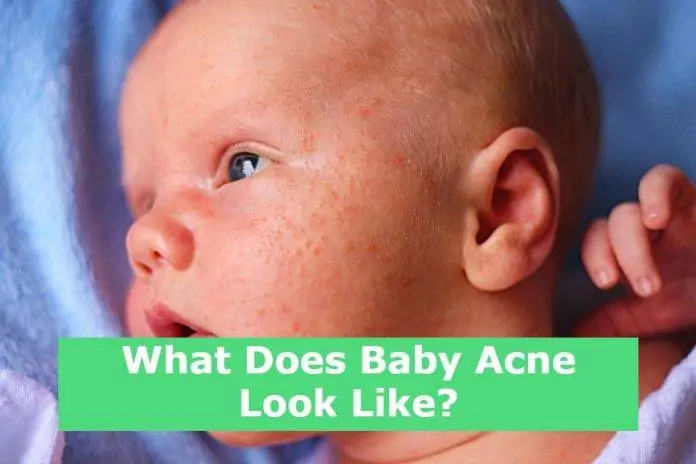There are many factors that can contribute to the growth of acne in your baby. You may want to know what these are, as well as learn about how to treat them. This article will give you some information on both.
Common causes
Baby acne is caused by the overproduction of oil by the sebaceous glands in the skin. When the oil and dirt get stuck in the pores of the skin, acne can occur. It can also be caused by external factors such as excessive exposure to heat and chemicals.
Babies are susceptible to the effects of harsh soaps, which may irritate the skin. To avoid irritation, wash the baby’s face with a gentle, fragrance-free soap. Apply a hypoallergenic moisturizer, such as coconut oil, to help prevent the skin from drying out.
If the bumps become infected, they may bleed or ooze opaque yellow fluid. This can make the acne more painful. Some parents might be tempted to pop the acne, but this is not recommended. The squeezing of the infected area can aggravate the problem and cause scarring.
If the acne does not clear up on its own, it is important to see a pediatrician. They can diagnose the condition and prescribe medication.
Symptoms
Baby acne is a common skin problem in newborns. It usually develops within a few weeks after birth. The red bumps and whiteheads that form on a baby’s face may look alarming, but they are harmless. If your child is experiencing a rash, you should contact your doctor.
Babies that develop acne should not be scratched or bathed with hot water. Also, scrubbing and drying your baby’s skin will only irritate the condition.
Your pediatrician can provide you with recommendations and personal care products that will help you get your baby’s acne under control. If your infant’s acne is severe, you can ask your doctor about oral antibiotics. These can reduce the chances of permanent scarring.
You can also try out topical creams. However, you should be careful about using oily or greasy creams, as these can worsen the condition.
It is important that you clean your baby’s face with a cloth dampened with warm water. This is because dry saliva can irritate the skin. Rather than scrubbing your baby’s face, pat the area gently.
Treatment
If you have a baby who’s showing signs of acne, there are several treatment options available. One of the most popular remedies is a medicated ointment. This is especially useful if your child has acne on the face. It can also be applied to the rest of his or her body.
When treating acne on the face, it’s important to avoid squeezing the pimples. Squeezing can aggravate the rash and even lead to scarring.
A pediatrician can perform an exam to determine the cause of the rash and recommend a suitable treatment. Some doctors prescribe antibiotics, which help prevent permanent scarring.
Other options for the treatment of acne on the face include the use of benzoyl peroxide, which is considered safe by most. Witch hazel can also be used as a natural astringent.
Another option is to use a soap-free cleanser. Avoid using lotions or moisturizers because they can irritate the skin.
For the best results, wash the baby’s face with a soft cloth. You can also give him or her a bath once a day to wash away the excess oils from the skin.
Eczema
Baby acne is a common skin problem that most newborns develop. The condition is usually benign, and it typically disappears on its own. However, parents are naturally concerned about it.
If the condition persists, a doctor may prescribe creams or medications to help the baby’s skin heal. In more severe cases, the doctor may recommend topical antibiotics. This is a great way to treat the problem and prevent scarring.
Infantile acne may appear in newborns as early as two weeks after birth. It typically clears up within a few months of age, but it may continue into the first three years of the child’s life.
Baby acne can appear in the face, neck, elbows, and knees, but it can also occur on the fingers and toes. Newborns’ skin is delicate and smooth, but it can develop blemishes as the body adjusts.
It can be difficult to tell the difference between baby acne and eczema. Both can cause red bumps on the skin, but there are key differences.




